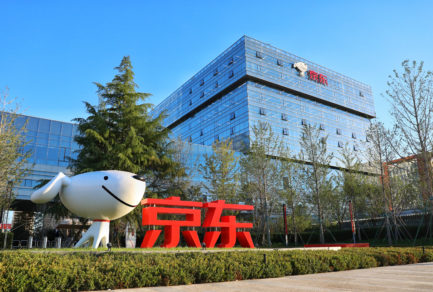Sep 1, 2020|
JD Logistics Head of Strategy: Building the Agile Supply Chain to Deal with Uncertainties
by Yuchuan Wang
Bing Fu, head of strategy of JD Logistics made a speech at the annual meeting of the China Chain Store & Franchise Association held on August 20th. Fu highlighted the critical role of agile supply chain in guaranteeing supplies under COVID-19 and its potential in helping deal with future uncertainty.
Compared with lean supply chain (LSC) which focuses on the stability and reduction of costs and supply chain waste, an agile supply chain requires rapid response to client’s demands. During the pandemic, the agility of JD’s supply chain made it possible for the company to quickly respond to emergencies and ensure the recovery of production capability.

For example, JD Logistics quickly increased the inventory in its various front warehouses based on consumption big data to make sure that goods were placed nearest to customers and could be delivered as soon as possible. After the lockdown in Wuhan, Hubei province, JD also launched an emergency plan to quickly deploy logistics staff and introduced automated delivery robots to minimize human contact when delivering supplies. JD even helped Hubei province set up a supply chain management platform, making emergency supplies such as masks, goggles, and protective clothing easier to manage, distribute and trace. All these quick responses have reflected the critical role of agility in supply chain construction.
According to Fu, the business environment has undergone immense change and a simple supply chain can no longer meet the increasing needs of various scenarios and channels; in the meantime, changes in the consumer market have resulted in not only an SKU (stock keeping unit) quantity that is far more extensive than 10 years ago, but also the shortened life cycle of SKUs. Clients will prefer enterprises that can respond more quickly in the future.
Fu said, “The past 20 years have seen the rapid expansion of globalization. There may not be more disasters than there were 20 years ago, but the impact of disasters on the supply chain is definitely much greater. With the deepening of globalization, the whole manufacturing and even the whole logistics industry will face unprecedented challenges. It is imperative for enterprises to improve supply chain agility and increase their risk management ability when faced with uncertain events.”
Fu also gave his suggestions for enterprises eager to improve supply chain agility.
On the one hand, enterprises can identify the unstable factors influencing supply chain in medium-and long-term planning, and also quickly adjust the supply chain network and supply capacity according to environmental changes; leveraging flexible and repeatable processes, enterprises can also manage assortment, inventory structure and inventory level. On the other hand, enterprises can quickly match supply plan with consumption demand based on big data, which can not only integrate upstream and downstream data, but also enhance the transparency of the supply chain, and thus speed up response to abnormal situations.
Fu suggests that in order to make the supply chain most agile, enterprises should:
- Build a digital twin model for the existing supply chain and recognize the unstable influencing factors of supply chain in medium- and long-term planning.
- Discover the respective demands of multi supply chains of an enterprise using data, and then set up a dedicated supply chain model.
- Use data that accurately reflects market conditions to enhance the ability to perceive market changes.
- Establish a digital planning system that can adjust supply chain based on front-end demands.
- Make your supply chain visible and able to handle abnormal situations.



 Chinese National TV: JD “Greened” Before National Guidelines
Chinese National TV: JD “Greened” Before National Guidelines

